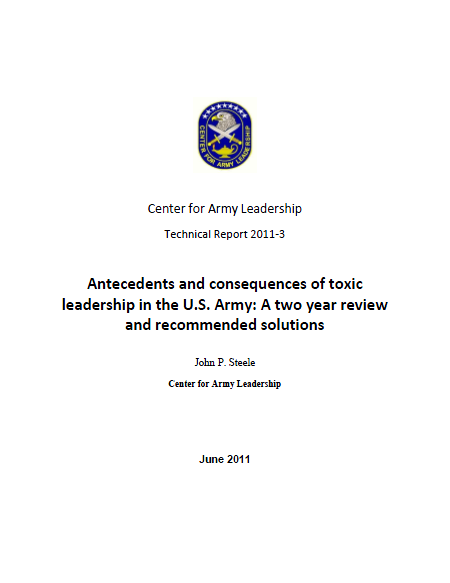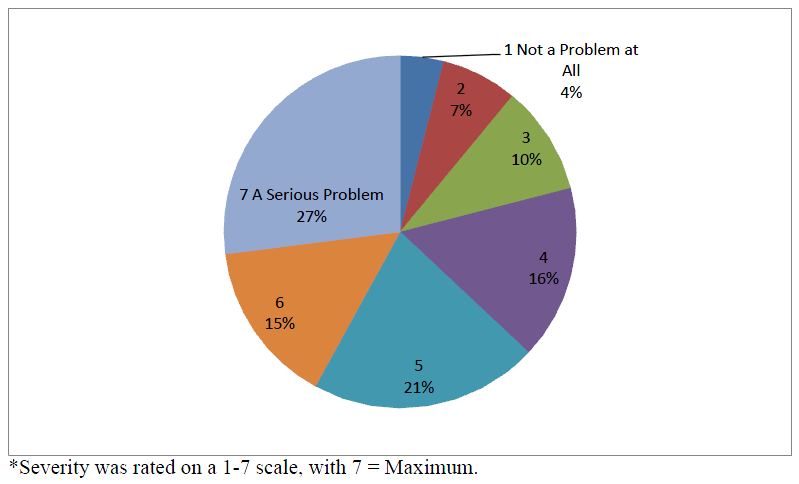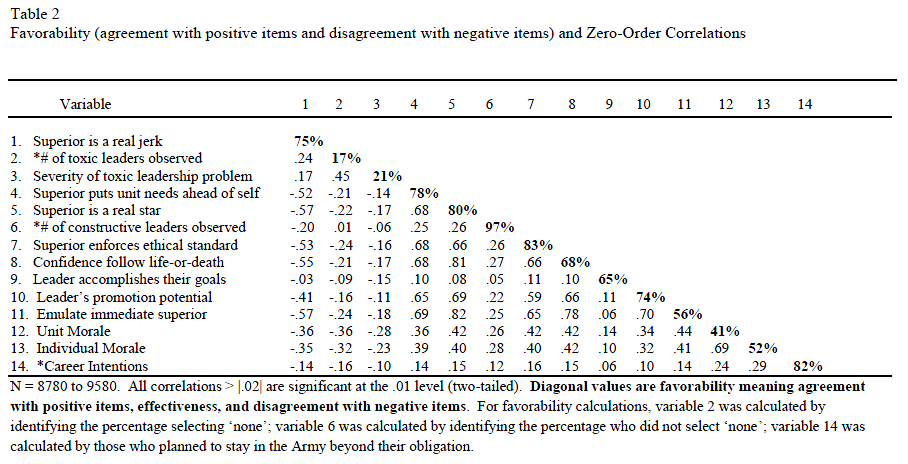Antecedents and consequences of toxic leadership in the U.S. Army: A two year review and recommended solutions
- John P. Steele, Center for Army Leadership
- 46 pages
- Distribution authorized to U.S. Government agencies and contractors.
- June 2011
TOXIC LEADERSHIP FRAMEWORK
This section provides a clear common framework. This framework can be readily applied to research, assessment, education, and policies. Stogdill (1974, p. 259) famously wrote nearly three decades ago that, “There are almost as many definitions of leadership as there are persons who have attempted to define the concept.” Toxic leadership, like leadership in general, is more easily described than defined (Reed, 2004). Although descriptions (e.g., assholes, abusive supervisors, bad leadership, bullies, corrosive leadership, dark leadership, destructive leadership, harassing leaders, health endangering leaders, intolerable bosses, jerks, tyrannical leaders, negative leaders, etc.) and definitions of toxic leadership vary, there are behavioral consistencies. Common behaviors that are repeated by toxic leaders include: avoiding subordinates, behaving aggressively toward others, denigrating subordinates, hoarding information, hoarding job tasks, blaming others for their own problems, overly critical of work that is done well, and intimidating others (Ashforth, 1994; Frost, 2004; Kellerman, 2004; Kile, 1990; Lipman-Blumen, 2005; Lombardo & McCall, 1984; Tepper, 2000).
…
Figure 4. Overall Severity of Toxic Leadership Problem.



